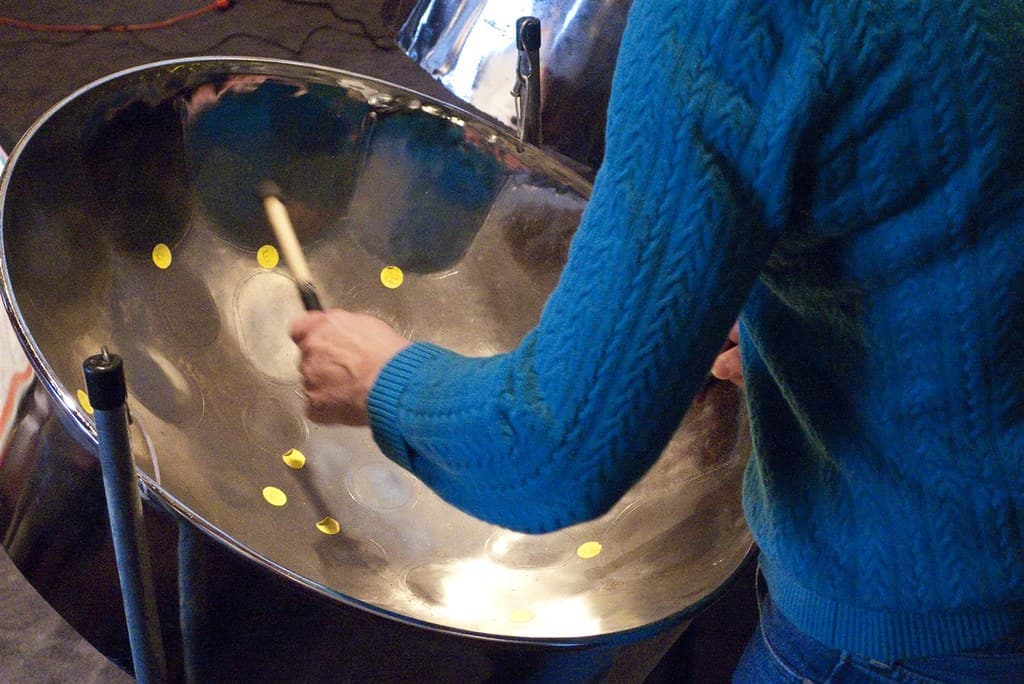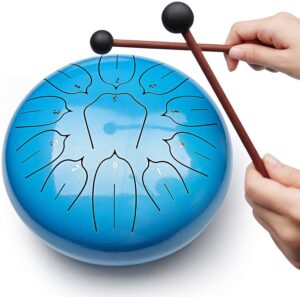
Steel drums (or steel pans) have been a part of Caribbean music for many years. There are literally hundreds of different steel drum techniques that can be used to add to your music, but not all of them are used by players. Some may be too advanced and complex, while others just don’t sound good when applied to songs.
The techniques in this article were chosen to provide the most versatility and overall usefulness when creating music with steel drums. The biggest challenge that you’ll run into as a new player is trying to decide which techniques to try first.

In this post, I will tell you about the basics of playing steel drums: position, grip, and stroke. After that, you can experiment with different playing techniques and have fun with your drum.
It doesn’t matter if you have just begun your journey or are someone who is thinking about getting back into playing steel drums. Exploring steel drum techniques will be fun either way.
Finding a position that feels natural and comfortable is basic but important. The very first thing to keep in mind is that you should be standing directly in front of the instrument, with your arms at or above waist level and your hands close to the surface at all times.
This may not sound like a big deal, but it’s incredibly important—if you don’t get into this position, it will be extremely difficult to play accurately and with speed. It took me a long time to find my groove in terms of where I felt comfortable playing from. Sometimes I was too close, sometimes I was too far away—it took me a long time to figure out what worked for me.
The other thing that people often forget about is that it’s important to distribute your weight evenly between both feet. If you’re feeling unbalanced, try switching up which foot is forward and which is back. This will help you play more comfortably, which makes it easier to focus on form instead of just trying to stay upright.
First thing’s first: make sure you’re holding it correctly. There are many ways to hold your mallet, but I’ll go over the most common ways.
Let’s begin with the basic grip. Hold the pan mallet with a fist and press it with your index finger. Hold more than one-third of the mallet with a light grip. This is important when it comes to using different amounts of pressure on different strokes in a roll or pattern.
The next thing you’ll want to do is grip the mallet with three fingers instead of just two. The pinky finger should be tucked underneath so that no pressure is applied to it at all. This helps prevent injury and makes it easier for you to move your hand freely while playing.
I found that my wrist would get tired quickly if I held the mallet too tightly. That way, I wouldn’t be able to play for very long. But if I held it loosely, the sound wasn’t as clear.

After a lot of trial and error and researching online, I found out that you can’t hold it too tightly or too loosely. If you hold it too tight, it will affect your technique, and you won’t be able to produce a good sound.
It’s better to hold it a bit loose and keep the mallet contact time as short as possible so the notes can vibrate freely. The key is finding that sweet spot where your grip is just right—not too tight, ut not too loose either.
Now when you know how to position yourself in front of the drum and how to hold the mallet, it’s time to learn how to hit the drum and produce the sound. There are two main steel drum strokes you need to know: the down-up stroke and the flick.
Let’s start with the down-up stroke. When using this stroke, you lower your pan stick using your wrist and then immediately return to your starting position. This will let you produce a crisp, clear note. It’s super easy!
The second major steel drum stroke is called the flick. This is where you move your wrist back and forth in a flicking motion. Flick stroke is used to move from lower notes to higher notes on the steel drum in a smooth motion.
With this stroke, you can move your pan stick from the bottom of the pan to the left or right side of the pan. The flick technique is super useful because it helps to create melodic sounds that are pleasing to the ear.
There is one additional stroke I would like to teach you, and it’s called single roll. This stroke is not unique to the steel pan. I have heard it used in many other types of percussion music as well. The single roll is great for sustaining a tone on the steel pan. Try it out by rapidly alternating right and left-hand down-up strokes.
You should hit the drum evenly and quickly. If you cannot manage it at the beginning, start slowly. Once you are sure the roll is even, you can gradually increase the speed.
When I first started playing steel drums, it was difficult to get the right sound. It took a lot of trial and error and a lot of patience to learn how to play the steel drum well. I had to learn how to position myself in front of the steel drum, hold the mallet, and balance my strike in order to produce the best sound. Once I mastered these techniques, I felt like I was able to make better music with my steel drums.
The rest is really all about experimentation. Every player will have their own set of tricks and techniques that they put together to make their sound, so there’s plenty of room for everyone. The sky’s the limit if you have enough time, patience, and passion.
Soundbrenner is a company dedicated to helping musicians stay focused on what truly matters: their music. By creating innovative devices, such as Soundbrenner Pulse and Core, our goal is to deliver the best possible practice experience for musicians. Click here to find out more.
Got a question about Soundbrenner wearables? Reach out to us at [email protected], we’re happy to help!